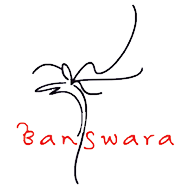SUSTAINABILITY IN THE TEXTILE INDUSTRY

OTHER ARTICLES
- Advantages and Usage Areas of Culvitation of Hemp
- The Place of Hemp in Yarn and Textile Industry
- The Place of Hemp in Yarn and Textile Industry
- What is Linen and Linen Production in Turkey
- Sustainability in The Textile Industry
- Tthe Global Effect of The Pandemic and Tthe Evaluation of The Textile Sector
- Naturel Fibers and Organic Yarn Production
- Hemp Production in Turkey, A Historical Brief and Global Hemp Market
- European Flax Certificate
- Search for Sustainable Production in Textile Raw Material and the Hemp Yarn
- Linen and Hemp's Simila and Different Aspects
- Hemp Fiber and Fabric Production
- Ecological Hemp Production
- Sustainability Studies in the Textile Industry - 2021
- What is Needed for Sustainability in the Textile Industry ?
- Organic Yarn Demand Increases As Textile Raw Material Crisis Escalates
- 2021 Data and 2022 Expectations for Ready-made Clothing Industry and Textile Raw Materials
- Fiber and Hemp Yarn Production and Yarn Export in the Turkish Textile Industry
Will the Textile-Clothing Industry Experience a Transformation?
In recent years, the diversity and decreasing prices in the clothing/fashion industry have drawn your attention. We all have 5 times more clothes in our wardrobe than our parents. This may make you feel good, but over time, problems began to arise at the point of "sustainability", which we will all realize. Although innovations in production technologies reduce costs, when the effects on the lives of garment workers, the environment, reduced agricultural areas and human health are considered, the cost can actually increase.
The cost effect reduces the quality of garments, and clothing trends that encourage the purchase of new ones instead of clothes that are not worn more than 5-10 times, that fade quickly, that are misshapen and worn are changing very quickly.
We make it cute by calling it fashion, and the number of marketing professionals constantly working to get new ones is constantly increasing.
We can better understand the change by looking at some numbers;
-
Brands are now working to ensure that shopping is continuous, not seasonal, by producing tens of micro collections instead of 2-season (spring-summer and autumn-winter) creations.
-
80 billion garments are produced every year.
-
The average per capita usage of an outfit has decreased to 7.
-
1 person in America consumes 35kg of textile product annually
-
Statistics show that most women use only 30% of the clothes in their closet.
So, does this vicious circle bring with it just a waste?
No, the reduced costs in textiles increase the use of toxic chemicals. Chemicals are used in fiber production, fabric dyeing, bleaching, etc., but even clothes made from 100% natural fibers can still contain many chemicals. Research is being carried out on the use of harmful substances in textiles. Greenpeace declared in a report that there are 11 substances known to cause toxin, carcinogens and hormonal disorders that should be banned but not banned.
In a recent study, it was announced that 60% of the tested products of 20 different brands, including fashion giants, contain hazardous chemicals.
Chemicals are the main components of our clothes, fiber production in textile, dyeing, bleaching, wet processing, intensive use of chemicals in cotton cultivation bring ocean pollution and soil pollution, if we say that 23% of chemical production in the world is for the textile industry or if we say that 70 million trees are cut for our clothes annually I think it's clearer to understand.
What can we do individually?
- We can choose products with organic fiber
- You can choose brands that support sustainable production.
- You can wash a newly purchased outfit without dressing your children.
- You can choose products labeled OEKO-TEX®, GOTS, or BLUESIGN®
- You can reduce the number of clothing purchases and turn to better quality products.
- You can choose the brands of countries that implement renewable energy policies.
Here are a few tips to detect the quality of the clothes
- Pay attention to the seams, does it start and end magnificently? Are the intervals equal? The sewing quality can be easily understood from the finishing and transitions.
- You can stretch the fabric without exerting too much force, you can't see a difference in a quality fabric, but the quality of the fabric does not take its former shape and becomes wrinkled. You can wash a newly purchased outfit without dressing your children.
- If you hold the fabric to the light, you can understand its thickness and density. Generally, quality fabric is thin.
- Metal zippers are preferred instead of plastic zippers in quality clothes, metal zippers are long-lasting.
- The harmony of the lines, the lines at the separation points such as the sleeves are inconsistent in the clothes that are generally produced with poor quality and care








Filofibra Pazarlama A.Ş.
FILOFIBRA Pazarlama A.Ş. has been providing service to Turkish Textile market in the sale of fiber, yarn and fabric in Istanbul since 1986.
Address
-
Filofibra Pazarlama A.Ş
-
Levent Cad. Sülün Sok. No: 34 1. Levent, Istanbul
-
Tel : +90 212 283 3860/ 9 Hat
-
Fax : +90 212 283 3859
-
Email - This email address is being protected from spambots. You need JavaScript enabled to view it.
Address Abroad
-
Filofibra SA
-
Riva Caccia 1 / A Central Park Bldg. 6900 Lugano / Switzerland
-
Tel - +41 91 985 78 11
-
Fax - +41 91 985 78 08 - 09 - 10
-
Email - This email address is being protected from spambots. You need JavaScript enabled to view it.

